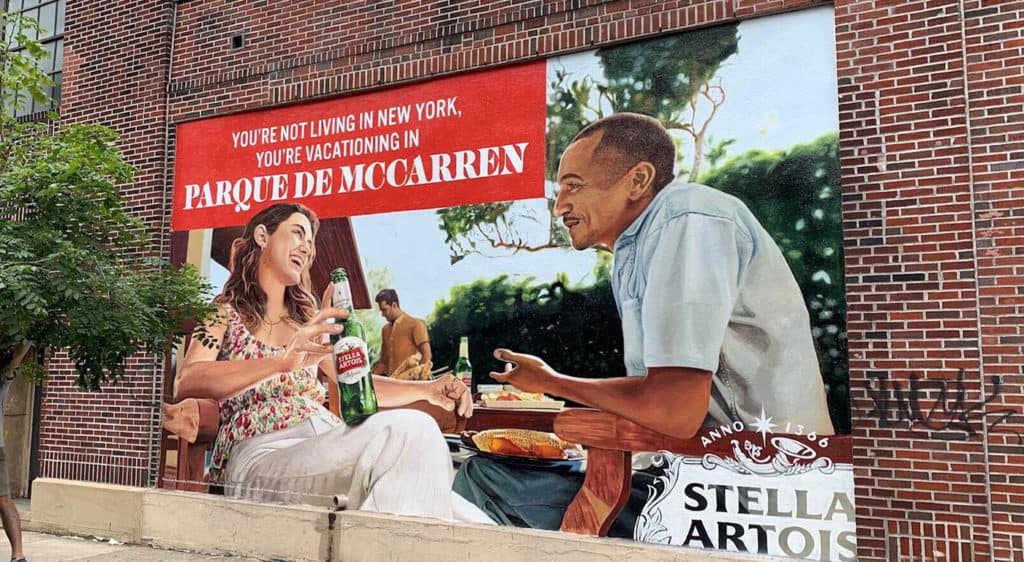Covid-19 has wreaked havoc on our lives and on ad spend. As with every other traditional media format, out-of-home (OOH) has taken quite the hit during this pandemic. Thankfully, since we are the oldest traditional advertising medium, this isn’t the first recession we have bounced back from. OOH has been around a lot longer than clicks and cookies.
Although OOH has laid out a roadmap for a smooth recovery, we can’t say the same for all brands. That is because in the OOH industry, we understand the importance of not going silent during a recession.
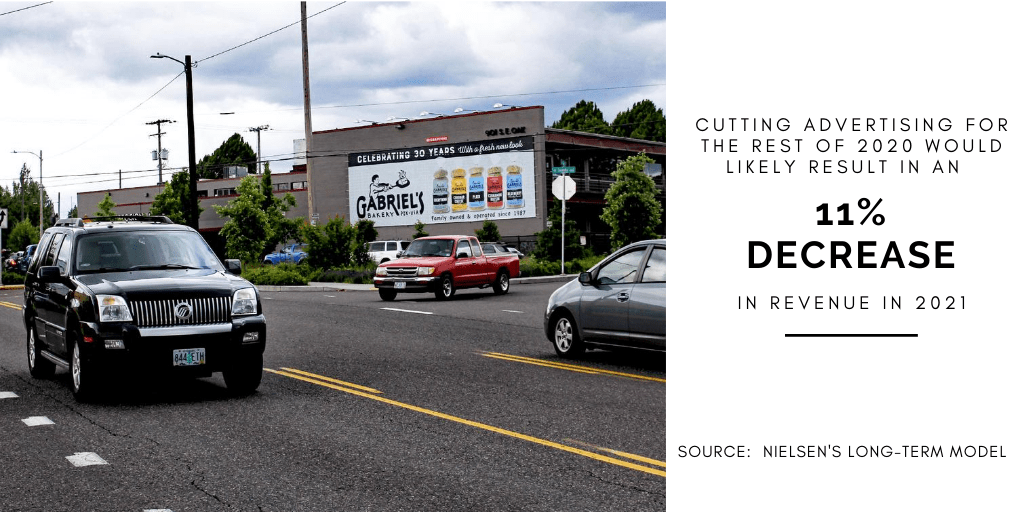
Here are reasons why brands shouldn’t stop advertising either:
According to Nielsen’s long term effect model, cutting advertising for the rest of 2020 would likely result in an 11% decrease in revenue in 2021. Ouch!
If your competitors are cutting ad spend, then that gives you 100 percent share of voice. Boom!
And, contrary to belief, people don’t stop buying in a recession. In fact, UBER, CNN, Airbnb and AutoNation were all launched during a recession.
WHY SPEND ON OOH ADS?
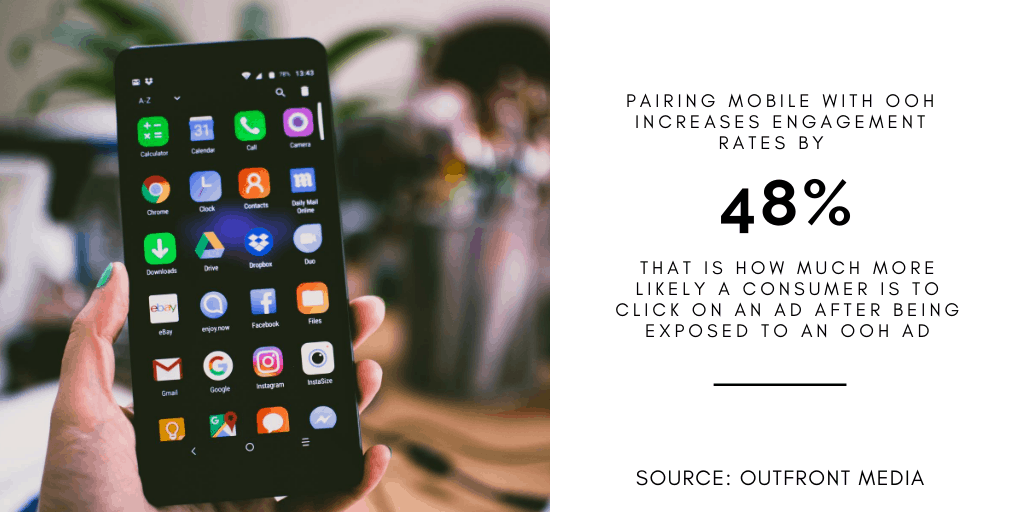
As OOH sales consultants, we know a successful campaign is located where the people are. This may have brands thinking that while social distancing is in place, they should be spending their ad dollars on mobile, television, and other forms of digital advertising.
However, think of OOH as big screens directing people to smaller screens (OAAA.) According to Ocean Nuero Insights, pairing OOH with mobile advertising increases engagement rates by 48% That is how much more likely a consumer is to click on a mobile ad after first being exposed to and OOH campaign (Outfront Media.)
Not to mention, OOH is by far the most trusted format with zero chance of fraud. With all of the clicks, cookies, robots, etc. digital advertising can be full of fake impressions. Other forms of advertising, (television, social media, email marketing,) are all formats located inside of other content. OOH is the only format that doesn’t disrupt the consumer experience.
Perhaps this is why major brands such as Adidas are pulling all ads from social media. With social media advertising and online ads, you can’t control your ad placement as easily. Especially in these highly political and controversial times, brands want more control over ad placement. That is why it is much safer for brands to opt for OOH, because it is the ad. There is no user generated content- just pure, simple, direct-to-consumer or business-to-business marketing. Our impressions are 100% people 100% of the time.
WHAT ABOUT SMALL BUSINESSES?
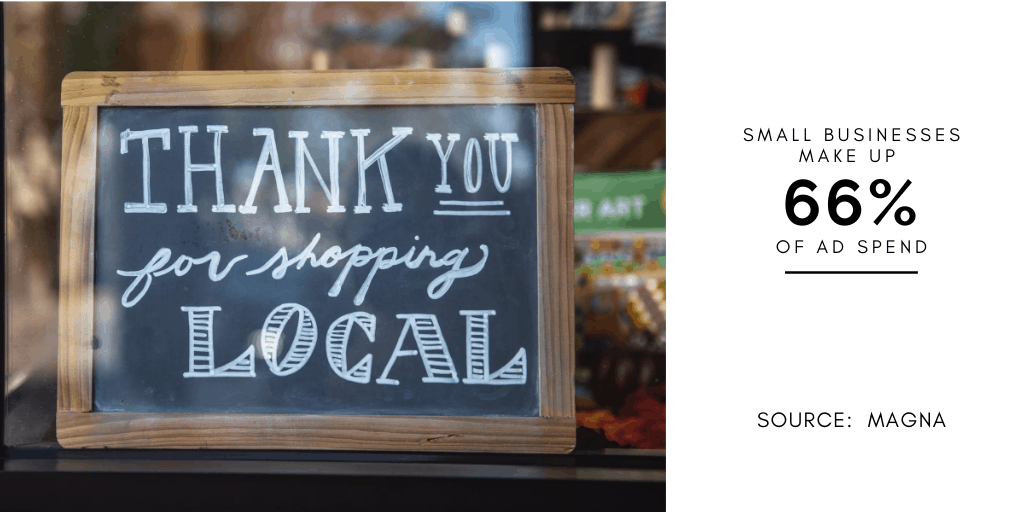
OOH isn’t only for national brands such as Coca-Cola and other key players. Small businesses truly benefit from adding OOH into their marketing mix, especially now!
One of the key variables contributing to decreased ad spend in Q2 has come from local business who make up 2/3 of ad spend (Magna.)
However, once lockdown is lifted, 32% of consumers strongly agree that they will make more of an effort to support small businesses. Which means using words such as “locally-owned” are great for driving sales and traffic (Nielsen.)
As always, OOH placement is about being very intentional. As OOH consultants, we at Brooklyn Outdoor encourage small businesses to use outdoor advertising. Data shows that people are in fact leaving their homes. And, more so than ever, people are leaving their homes with the intent to make a purchase. Billboards, transit advertising, and other formats are a great way to catch consumers at the point of purchase.
We understand the uncertainty of how to spend ad dollars during these financially hard times. Fortunately for brands + agencies, right now OOH is a buyer’s market. Just the same as other ad formats, COVID-19 sent billboard prices plummeting. With other brands reluctant to spend, brands are able to get the largest share of voice at the best rate.
TRAVEL AND AD SPEND
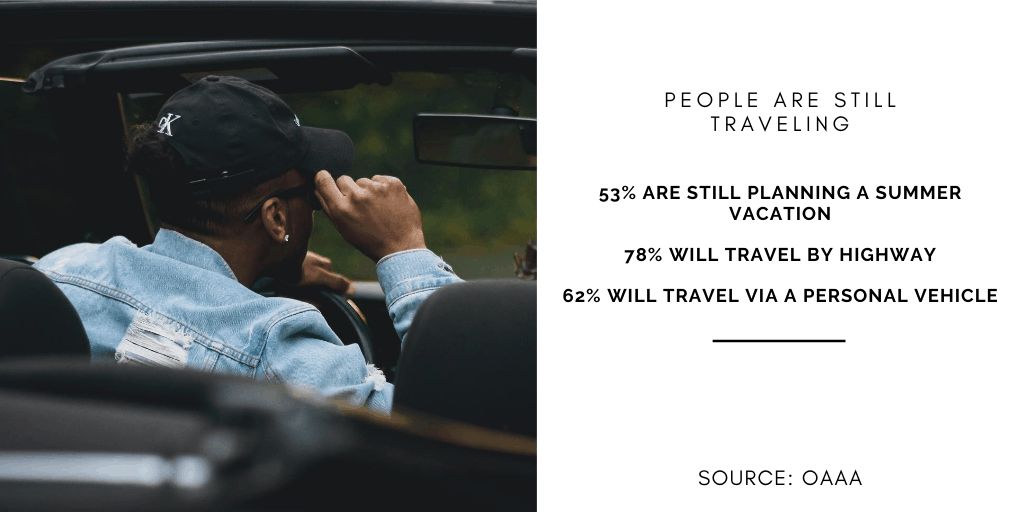
Long live summer vacation! INRIX, who monitors traffic and passenger vehicular travel, has reported travel in the US has returned to pre COVID-19 levels. Woo-hoo!
And, according to OAAA, consumers are still planning to travel for leisure in 2020. (Domestically and by car that is!)
- 53% are still planning a summer vacation
- 78% will travel by highway
- 62% will travel via a personal vehicle
Plus, RV sales have skyrocketed, meaning more vacationers will be taking in billboards!
This has also given brands a rare opportunity to reach a different demographic. 18-to-24-year-old consumers who would typically opt to travel by plane, will be hitting the road for domestic travel in 2020. Not to mention, these American Millennials make up $200 billion in annual buying power (Media Post)!
More on summer travel and purchasing behavior can be found in this great thought leadership article from OAAA.

